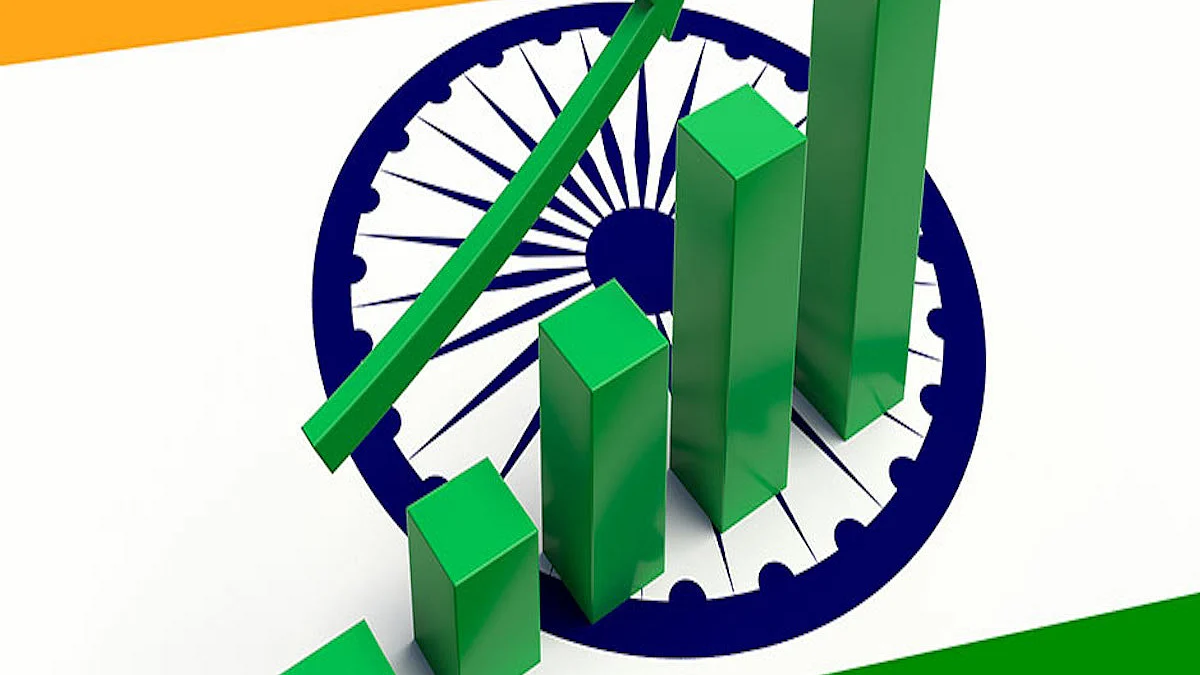Seeping slowdown: GDP growth slows to 4.4 per cent in second quarter
National Statistical Office data estimates 2022-23 GDP growth at 7 per cent compared to an upwardly revised 9.1 per cent growth in 2021-22. Output of 8 core sectors hits 4-month high.

Data from the National Statistical Office on Tuesday, showed that India's GDP growth dropped to 4.4 per cent in the October to December 2022 quarter, down from 6.3 per cent in the previous quarter.
The official data also projected 7 per cent GDP growth in 2022-23, up from an upwardly revised 9.1 per cent growth in 2021-22.
GDP growth was previously projected to be 8.7 per cent in 2021-22. The economy's Gross Value Added (GVA) increased by 4.6 per cent in the third quarter (Q3) of 2022-23, down from 5.5 per cent in the previous quarter, with manufacturing continuing to contract in the second quarter, but at a slower pace of 1.1 per cent compared to 3.6 per cent in Q2.
Mining and quarrying GVA recovered from a 0.4% contraction in Q2 to expand 3.7 per cent in Q3, while Agriculture, Forestry, and Fishing GVA increased at the quickest rate this year to 3.7 per cent, up from 2.4 per cent-2.5 per cent in Q1 and Q2.
GVA growth in construction accelerated to 8.4 per cent in Q3 from 5.8 per cent in Q2, as did the growth in electricity, petrol, water supply, and other utility services (up 8.2 per cent in Q3 from 6 per cent in Q2).
However, three other major industry heads recorded lower GVA growth in Q3 from Q2, contributing to the drag on overall growth, including the contact-intensive Trade, Hotels, Transport, Communication, and Services related to Broadcasting sectors, which grew at 9.7 per cent compared to 15.6 per cent in Q2.
Manufacturing and Mining GVA contractions for Q2 have been upgraded by the NSO from its earlier estimates of a 4.3 per cent and 2.8 per cent shrinkage in the two sectors, respectively. Agriculture GVA growth, on the other hand, has been downgraded sharply for Q1 as well as Q2. Earlier estimates of 4.5 per cent and 4.6 per cent GVA growth in these quarters, have been slashed to 2.5 per cent (Q1) and 2.4 per cent (Q2), respectively.
Total GVA increase in Q1 was decreased from 12.7 per cent to 12.1 per cent, while Q2 GVA growth was reduced from 5.6 per cent to 5.5 per cent from 5.6 per cent previously predicted. GDP growth for the first quarter of 2022-23 has been reduced from 13.5 per cent to 13.2 per cent, although Q2 GDP growth predictions have remained intact.
The first nine months of 2022-23 have now recorded a 7.2 per cent increase in GVA compared to 10.7 per cent in the same period of 2021-22, however GDP is predicted to have increased 7.7 per cent compared to 11.1 per cent from April to December 2021.
"The Q3 growth rate of 4.4% is also influenced by base effects as a reflection of the upward revisions in the prior year's growth estimates," stated Chief Economic Advisor V. Anantha Nageswaran, adding that "a 7% growth rate for 2022-23 remains a viable possibility."
"Manufacturing sector looks to be slowing down due to rising input costs but Purchasing Managers' Index and the four-month high growth of key sectors in January indicates that manufacturing is performing well. "Since the data is not seasonally adjusted, quarterly growth trends should be regarded with caution," he stated.
Nageswaran explained that high-frequency frequency data implies demand is picking up in two-wheeler sales in the first 10 months of this year and is already close to surpassing the full 2021-22 numbers. "There is high urban demand in all categories, including passenger vehicle sales, new housing launches, and sales, airline passenger traffic, and commercial vehicle sales," he said.
Meanwhile, an 18 per cent increase in fertiliser production and double-digit growth in coal mining and electricity generation propelled India's eight main sectors' output growth to a four-month high of 7.8 per cent in January from 7 per cent in December 2022.
With output increasing 2.9 per cent sequentially from December 2022, the overall Index of Core Industries, which makes up around 40 per cent of the Index of Industrial Production (IIP), reached its highest level in ten months this January. In January 2022, core sector output had increased by 4 per cent.
With the exception of crude oil, all key infrastructure sectors experienced an output rise from a year ago for the second consecutive month. Production of crude oil decreased by 1.1 per cent, the ninth consecutive month when output decreased year over year. Base effects helped fertiliser output soar because it had decreased by 2 per cent in January 2022.
In January 2023, production of cement and steel increased by 4.6 per cent and 6.2 per cent, respectively. For both industries, however, this represented the slowest growth rate in the previous three months. The output of natural gas and refinery products both increased for the second consecutive month, with the growth rates quickening to 5.3 per cent and 4.5 per cent, respectively.
Follow us on: Facebook, Twitter, Google News, Instagram
Join our official telegram channel (@nationalherald) and stay updated with the latest headlines
